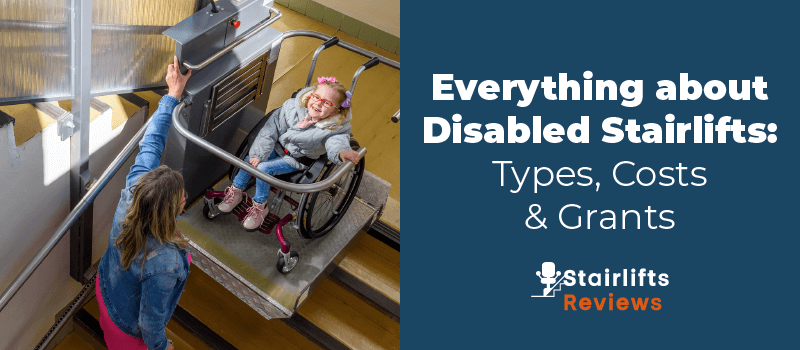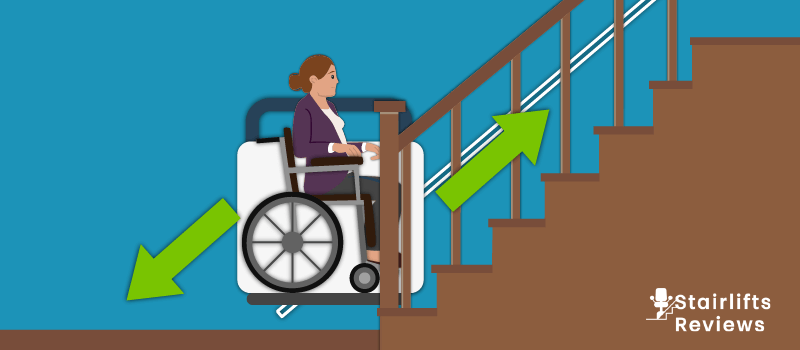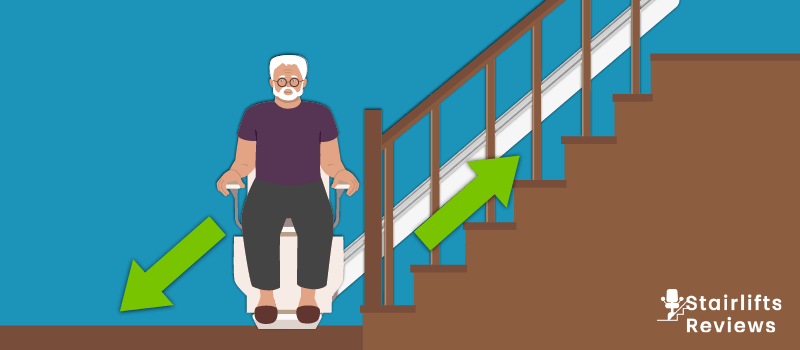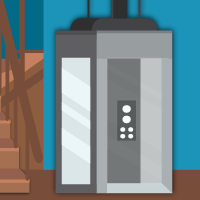Disabled Stairlifts: Types, Costs & Grants 2025

- From seated stair lifts for those who can sit comfortably to platform lifts for wheelchair users, the range of options ensures that everyone can find a solution that works for their mobility challenges.
- On average, prices range from £2,000 for a basic straight stair lift to over £10,000 for a custom-built curved or platform lift. The cost of a stair lift in the UK can vary significantly depending on the type and complexity of the installation.
- Programs such as the Disabled Facilities Grant (DFG) can provide substantial financial support, making these essential home modifications more accessible to those who need them most.
Navigating stairs can be one of the most significant challenges for individuals with mobility issues, but a disabled stair lift can provide a life-changing solution. In the UK, a variety of stair lifts are available to accommodate different types of staircases and user needs, making it easier for those with disabilities to move freely and safely within their homes. Understanding the types of stair lifts, the associated costs, and the financial assistance available can help you make an informed decision.
Investing in a disabled stairlift can greatly enhance the quality of life for individuals with mobility issues. If you’re considering a stair lift, we’re here to help. Contact us today for a free consultation, where we can discuss your specific needs, provide a detailed cost estimate, and guide you through the process of applying for available grants. Let us help you find the perfect stairlift solution to improve your independence and safety at home.
Are you looking for stairlift quotes? You would be spending hours researching and contacting multiple companies on your own, but we provide you an easier way. You can quickly complete our quick 30-second form to receive up to 4 free quotes from local stairlift companies and installation experts. This service is entirely free and has no obligations. Click the button below to begin!
Contents
Types of stairlifts suitable for users with disability
How much does a disability stairlift cost?
Who is eligible for a free disabled stairlift?
Is there an alternative to a disability stairlift?
Types of stairlifts suitable for users with disability
Selecting the right stairlift for a user with a disability is crucial to ensuring safety, comfort, and accessibility. In the UK, there is no one-size-fits-all solution, as different types of disabilities require different stairlift designs. Below, we outline the various types of stairlifts available, focusing on how each can assist specific mobility needs.
Platform stairlift (wheelchair lift)
 Platform stair lifts, also known as wheelchair lifts, are designed specifically for individuals who use wheelchairs. These lifts feature a platform that allows the user to roll on and remain seated in their wheelchair while navigating the stairs, providing a safe and independent solution.
Platform stair lifts, also known as wheelchair lifts, are designed specifically for individuals who use wheelchairs. These lifts feature a platform that allows the user to roll on and remain seated in their wheelchair while navigating the stairs, providing a safe and independent solution.
- Designed for wheelchair users: This type of stairlift enables users to move between floors without needing to transfer out of their wheelchair.
- Versatile for different staircases: Platform lifts are available for both straight and curved staircases, offering flexibility depending on the home’s layout.
- Indoor and outdoor options: These lifts can be installed both indoors and outdoors, making them suitable for various environments.
- Popular models: Notable models such as the Handicare freecurve for curved stairs, both known for their reliability and ease of use.
- Cost considerations: Platform stair lifts can be an expensive option due to the complexity of the design and installation, often ranging from £8,000 to £15,000 or more.
Perch stairlift
 Perch stairlifts are designed for users who have difficulty sitting but can stand or perch comfortably. This type of lift is ideal for individuals with lower body weakness but good upper body strength, allowing them to maintain an upright position while being transported up or down the stairs.
Perch stairlifts are designed for users who have difficulty sitting but can stand or perch comfortably. This type of lift is ideal for individuals with lower body weakness but good upper body strength, allowing them to maintain an upright position while being transported up or down the stairs.
- Ideal for lower body weakness: Best suited for those with conditions that prevent comfortable sitting, such as knee or hip problems, while still having sufficient upper body strength to support themselves.
- Flexible installation: Perch stairlifts are available for both straight and curved staircases and can be installed indoors or outdoors, depending on the user’s needs.
- Top models: Models like the Brooks Perch Stairlift and the Acorn 180 offer smooth operation and are recognised for their user-friendly design.
- Cost considerations: Perch stairlifts typically range from £3,000 to £7,000, depending on the staircase configuration and any additional features required.
Seated stairlifts
 Seated stairlifts are the most common type of stairlift, providing a comfortable chair that users sit in as they are transported up or down the stairs. These are suitable for individuals who can sit and stand with minimal assistance and need a simple solution for navigating stairs.
Seated stairlifts are the most common type of stairlift, providing a comfortable chair that users sit in as they are transported up or down the stairs. These are suitable for individuals who can sit and stand with minimal assistance and need a simple solution for navigating stairs.
- Best for general mobility issues: Ideal for elderly users or those with conditions like arthritis that make climbing stairs difficult.
- Customizable options: Available for straight, curved, and even outdoor staircases, with options for added features like swivel seats and safety belts.
- Popular models: The Handicare 1100 is among the leading models in the UK, offering comfort and reliable performance.
- Cost considerations: Seated stairlifts are typically more affordable, ranging from £2,000 to £5,000 for straight staircases, with curved models costing more.
Heavy-duty stairlifts
 Heavy-duty stairlifts are designed to support higher weight capacities and offer a more robust design for users who require additional space and stability.
Heavy-duty stairlifts are designed to support higher weight capacities and offer a more robust design for users who require additional space and stability.
- Support for heavier users: Ideal for individuals who need extra support due to higher body weight or other physical needs.
- Reinforced and spacious: These stairlifts feature wider seats, stronger motors, and enhanced safety features.
- Notable models: The Bruno Elite Heavy-Duty Stairlift and the Savaria K2 Plus are popular choices, known for their durability and smooth operation.
- Cost considerations: Due to their reinforced structure, heavy-duty stairlifts are priced higher, typically ranging from £3,500 to £10,000.
Choosing the right stairlift in the UK involves considering the specific needs of the user, the type of staircase, and the available features. By understanding the different types of stairlifts and how they cater to various disabilities, you can make an informed decision that ensures safety, comfort, and independence in the home.
How much does a disability stairlift cost?
 In the UK, the average cost of a disability stair lift typically ranges from £2,000 to £15,000 or more. The wide range reflects the different types of stair lifts available, from basic models for straight staircases to more complex systems designed for curved or multi-landing staircases.
In the UK, the average cost of a disability stair lift typically ranges from £2,000 to £15,000 or more. The wide range reflects the different types of stair lifts available, from basic models for straight staircases to more complex systems designed for curved or multi-landing staircases.
Below, we provide a detailed breakdown of costs by stair lift type and what influences these prices.
Cost breakdown by stairlift type
The cost of a disability stair lift in the UK can vary greatly depending on the type of stair lift, the design of your staircase, and any additional features you may choose. While the investment can be substantial, the increased mobility and independence that a stair lift provides can make it a worthwhile expense.
| Cost for different stairlift models | |
|---|---|
| Stairlift type | Average cost (GBP) |
| Seated stairlift | £2,000 to £5,000 |
| Perch stairlift | £3,000 to £7,000 |
| Platform stairlift (wheelchair lift) | £8,000 to £15,000+ |
| Heavy-duty stairlift | £3,500 to £10,000 |
Understanding these costs and the factors that influence them will help you make an informed decision that best suits your needs and budget.
Factors affecting the cost
The cost of a stair lift is influenced by several key factors:
- Type of stairlift: Different stair lift designs come with varying costs. For example, straight stair lifts are generally less expensive than curved or platform lifts.
- Staircase complexity: The design of your staircase plays a significant role in the cost. A straight staircase is simpler and cheaper to install a stair lift on, while curved, spiral, or multi-landing staircases require custom-built tracks, which increase the cost.
- Additional features: Optional features such as powered swivel seats, folding rails, custom upholstery and additional stairlift insurance charges can add to the overall cost of the stair lift.
- Installation: The complexity of the installation process, including any necessary modifications to the home, can also impact the final price.
- Brand and model: The brand and model of the stair lift can influence the price, with higher-end models or well-known brands often commanding a premium due to their reliability, durability, and additional features.
Who is eligible for a free disabled stairlift?
 A stair lift can be a life-changing home adaptation for individuals with mobility issues, providing the freedom to move between floors safely and comfortably. In the UK, several funding options are available to help cover the cost of a stair lift, but eligibility largely depends on the nature of the disability and financial circumstances.
A stair lift can be a life-changing home adaptation for individuals with mobility issues, providing the freedom to move between floors safely and comfortably. In the UK, several funding options are available to help cover the cost of a stair lift, but eligibility largely depends on the nature of the disability and financial circumstances.
Below, we explore which disabilities may qualify for a stair lift, the eligibility criteria, and the grant schemes and charities that can assist with funding.
Eligibility for a free stairlift
To qualify for a free or subsidised stair lift in the UK, individuals must typically demonstrate that their disability significantly impairs their ability to use stairs safely. The eligibility process usually involves an assessment by a healthcare professional, such as an occupational therapist, who evaluates the individual’s needs and determines whether a stair lift is necessary.
Disabilities that may qualify for a stairlift
Eligibility for a free stair lift is generally determined through a means-tested process, considering both the severity of the disability and the individual’s financial situation.
- Arthritis: Individuals with severe arthritis, particularly in the knees, hips, or spine, may find it difficult or painful to navigate stairs, making them eligible for a stair lift.
- Multiple Sclerosis (MS): People with MS often experience muscle weakness, balance issues, and fatigue, which can make using stairs extremely challenging.
- Parkinson’s Disease: As Parkinson’s progresses, symptoms such as tremors, rigidity, and postural instability can make stair navigation hazardous, potentially qualifying for a stair lift.
- Stroke: Stroke survivors often experience partial paralysis or severe weakness on one side of the body, making stair lifts essential for safe mobility.
- Chronic Obstructive Pulmonary Disease (COPD): Individuals with severe COPD may struggle with breathlessness when climbing stairs, and a stair lift can help conserve energy and prevent exhaustion.
- Spinal Cord Injuries: Those with spinal cord injuries that impair lower body function may qualify for a platform stair lift to accommodate wheelchair use.
Several stairlift grants and charities in the UK offer financial assistance to cover the cost of stair lifts for those who qualify. These programs often have specific eligibility criteria, including a financial means test. Here are a few of options:
 Disabled Facilities Grant (DFG)
Disabled Facilities Grant (DFG)
The Disabled Facilities Grant (DFG) is a key source of funding for home adaptations, including stair lifts, in the UK.
- Eligibility: The DFG is available to homeowners and tenants in the UK. It is means-tested, meaning your income and savings will be assessed. An occupational therapist will conduct an assessment to determine the necessity of a stair lift.
- Coverage: The grant can cover up to £30,000 in England, with different limits in Scotland, Wales, and Northern Ireland. It can be used to fund the installation of a stair lift, including both straight and curved models.
- Application: Applications are submitted through your local council, and the process may involve several steps, including financial assessment and approval of the proposed home adaptation.
Charities and non-profit organisations
In addition to government grants, various charities and non-profit organisations provide financial support for individuals needing stair lifts:
- Turn2us: This charity offers grants to individuals facing financial hardship, which can be applied towards stairlift cost coverage.
- Independence at home: A charity that provides grants to help cover the cost of essential home adaptations for people with disabilities, including stair lifts.
- The MS Society: Specifically supports people with multiple sclerosis by offering grants for mobility aids, including stair lifts.
These organisations typically require applicants to meet specific eligibility criteria, including proof of financial need and medical necessity.
Can you get a stairlift from the NHS?
No, while you do not directly get NHS stairlifts, the National Health Service (NHS) play a vital role in helping individuals obtain one:
- Occupational therapy assessment: The NHS can arrange for an occupational therapist to assess your mobility needs. This assessment is often a prerequisite when applying for grants such as the Disabled Facilities Grant (DFG) or other financial assistance.
- Advice and referrals: The NHS can provide guidance on the types of stair lifts available and may refer you to local council services, charities, or grant schemes that can assist with funding.
- Loan equipment services: In some cases, the NHS or local councils might offer short-term loans of mobility equipment, including stair lifts, particularly for individuals recovering from surgery or those with temporary disabilities.
While you cannot obtain a stair lift directly from the NHS, their support in the assessment and referral process is crucial in securing the necessary funding and resources to install a stair lift.
Eligibility for a free or subsidised stair lift in the UK depends on the severity of the disability, the individual’s financial circumstances, and the availability of funding through grants or charities. If you or a loved one is struggling with mobility issues and could benefit from a stair lift, it’s essential to explore these options and apply for the necessary assessments and financial support.
The combination of government grants, charitable funding, and NHS support can make this vital home adaptation more accessible, improving safety and independence at home.
Is there an alternative to a disability stairlift?
While stair lifts are a popular solution for many individuals with mobility issues, they are not the only option available. Depending on the specific needs and circumstances, stairlift alternatives such as wheelchair ramps, home lifts (also known as platform lifts), and grab bars can be more suitable. Below, we explore these alternatives, who they are best suited for, and how they can enhance home accessibility.
Wheelchair ramps
 Wheelchair ramps are a straightforward and effective alternative to stair lifts, particularly for individuals who use wheelchairs or have other mobility aids that make stairs inaccessible.
Wheelchair ramps are a straightforward and effective alternative to stair lifts, particularly for individuals who use wheelchairs or have other mobility aids that make stairs inaccessible.
- Who can use them?: Wheelchair ramps are ideal for individuals who rely on wheelchairs, scooters, or walkers. They provide a smooth, inclined surface that allows users to navigate entrances and exits without needing to transfer out of their mobility aid.
- Benefits: Ramps are versatile and can be installed both indoors and outdoors, depending on the layout of the home. They are particularly useful for single-level homes where a small number of steps lead to the entrance or other areas.
- Considerations: The space required for a wheelchair ramp can be significant, especially for longer or steeper inclines. This makes them more suitable for homes with sufficient outdoor or indoor space.
Home lifts (platform lifts)
 Home lifts, also known as platform lifts, offer a more comprehensive solution for those with significant mobility challenges. These lifts function similarly to elevators, transporting users between floors in their homes.
Home lifts, also known as platform lifts, offer a more comprehensive solution for those with significant mobility challenges. These lifts function similarly to elevators, transporting users between floors in their homes.
- Who can use them?: Home lifts are ideal for wheelchair users or individuals with severe mobility impairments who cannot safely use stairs or transfer into a stair lift. They are also a good option for multi-story homes where ramps are impractical.
- Benefits: Home lifts provide complete independence in navigating between floors, accommodating wheelchairs, walkers, or even individuals with severe balance issues. They can be installed both inside and outside the home and can be customised to fit various architectural designs.
- Considerations: Home lifts are a significant investment, often more expensive than stair lifts, and they require more extensive installation work, including potential structural modifications to the home.
Grab bars and handrails
 Grab bars and handrails are a more affordable and less invasive alternative to stair lifts, providing support for those who still have some mobility but need assistance with balance and stability.
Grab bars and handrails are a more affordable and less invasive alternative to stair lifts, providing support for those who still have some mobility but need assistance with balance and stability.
- Who can use them?: Grab bars and handrails are suitable for individuals who can still walk but need extra support when climbing stairs or navigating certain areas of the home. They are often used by elderly individuals or those with mild to moderate mobility issues.
- Benefits: These fixtures are easy to install and can be placed in key areas such as staircases, bathrooms, and hallways to provide additional stability and prevent falls. They are cost-effective and can significantly improve safety in the home.
- Considerations: Grab bars and handrails are best for individuals who have enough strength and mobility to use them effectively. They are not suitable for those who cannot walk or who have severe balance or coordination issues.
While stair lifts are a popular solution for improving home accessibility, alternatives like wheelchair ramps, home lifts, and grab bars may better suit certain individuals’ needs. Choosing the right option depends on your specific mobility challenges, the layout of your home, and your budget.
If you’re considering a home adaptation to improve mobility and independence, it’s essential to explore all available options. Are you looking for stairlift quotes? You would be spending hours researching and contacting multiple companies on your own, but we provide you an easier way.
You can quickly complete our quick 30-second form to receive up to 4 free quotes from local stairlift companies and installation experts. This service is entirely free and has no obligations. Click the button below to begin!







